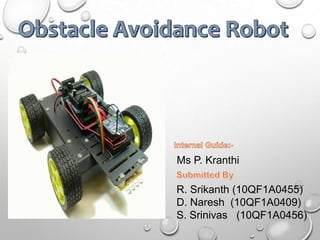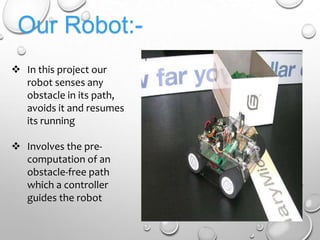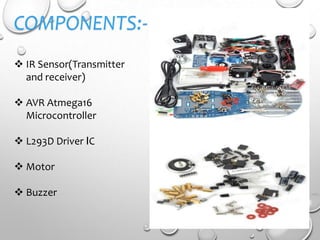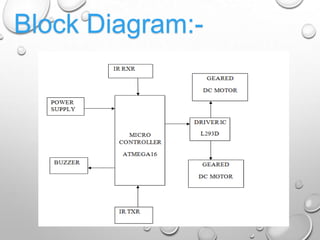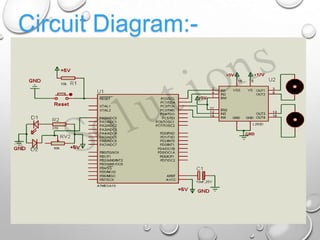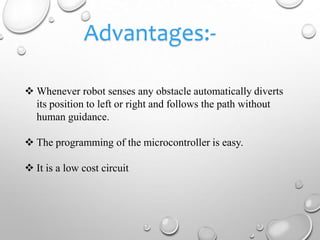This document describes a student robotics project. The project involves building a robot that can sense obstacles using IR sensors, avoid obstacles autonomously, and resume its path. The robot is controlled by an AVR ATmega16 microcontroller. It uses an IR sensor to detect obstacles and an L293D motor driver and DC motors for movement. When an obstacle is detected, the microcontroller diverts the robot left or right to avoid the obstacle before resuming its forward motion. The project aims to create a mobile robot that can navigate independently within certain limitations.
